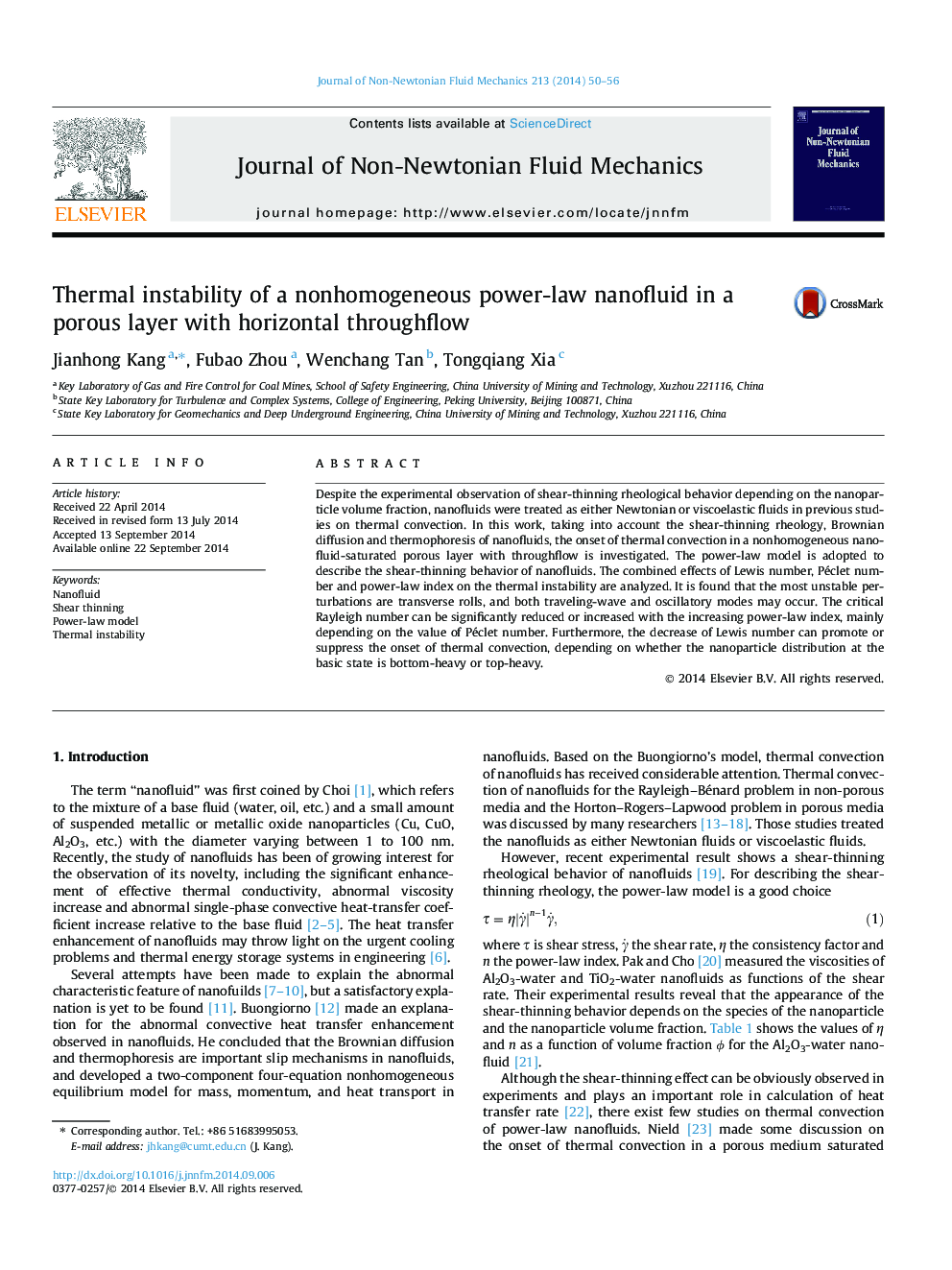| Article ID | Journal | Published Year | Pages | File Type |
|---|---|---|---|---|
| 670577 | Journal of Non-Newtonian Fluid Mechanics | 2014 | 7 Pages |
•Thermal instability of a nonhomogeneous non-Newtonian nanofluid is studied.•Power-law model is adopted to describe the non-Newtonian rheology of nanofluid.•Brownian diffusion and thermophoresis of nanopaticles are considered.•Effects of power-law index, Lewis and Péclet numbers on instability are analyzed.•Different perturbation modes at the state of marginal stability are determined.
Despite the experimental observation of shear-thinning rheological behavior depending on the nanoparticle volume fraction, nanofluids were treated as either Newtonian or viscoelastic fluids in previous studies on thermal convection. In this work, taking into account the shear-thinning rheology, Brownian diffusion and thermophoresis of nanofluids, the onset of thermal convection in a nonhomogeneous nanofluid-saturated porous layer with throughflow is investigated. The power-law model is adopted to describe the shear-thinning behavior of nanofluids. The combined effects of Lewis number, Péclet number and power-law index on the thermal instability are analyzed. It is found that the most unstable perturbations are transverse rolls, and both traveling-wave and oscillatory modes may occur. The critical Rayleigh number can be significantly reduced or increased with the increasing power-law index, mainly depending on the value of Péclet number. Furthermore, the decrease of Lewis number can promote or suppress the onset of thermal convection, depending on whether the nanoparticle distribution at the basic state is bottom-heavy or top-heavy.
